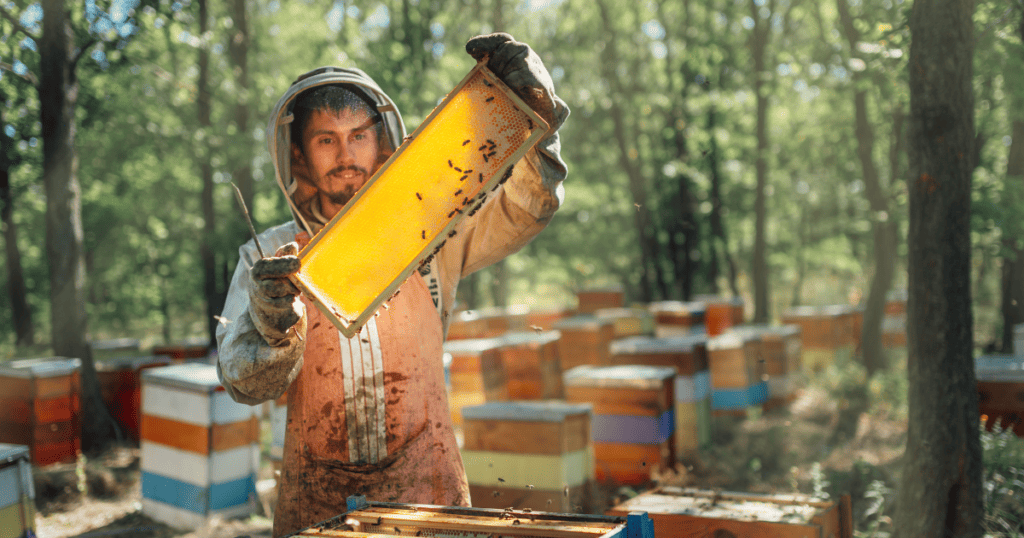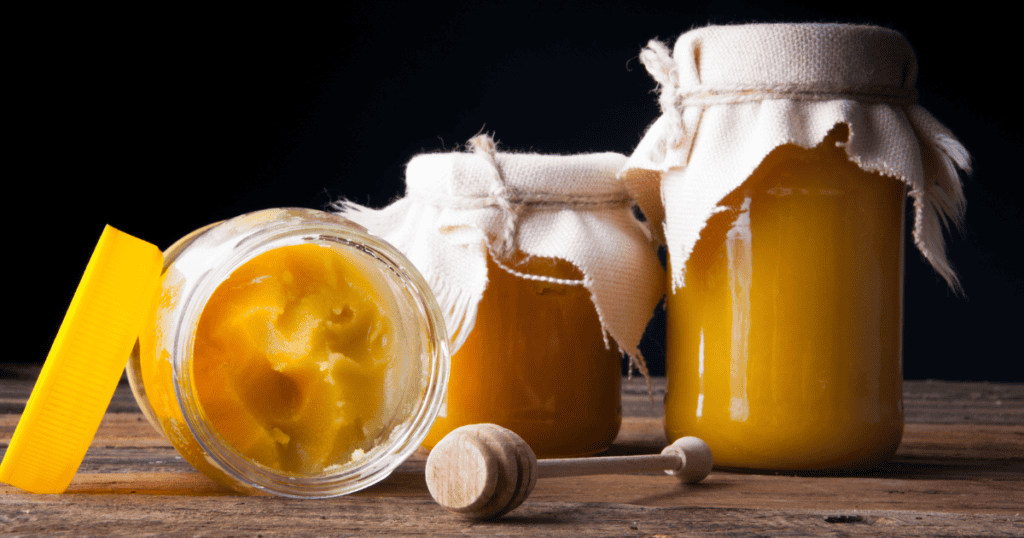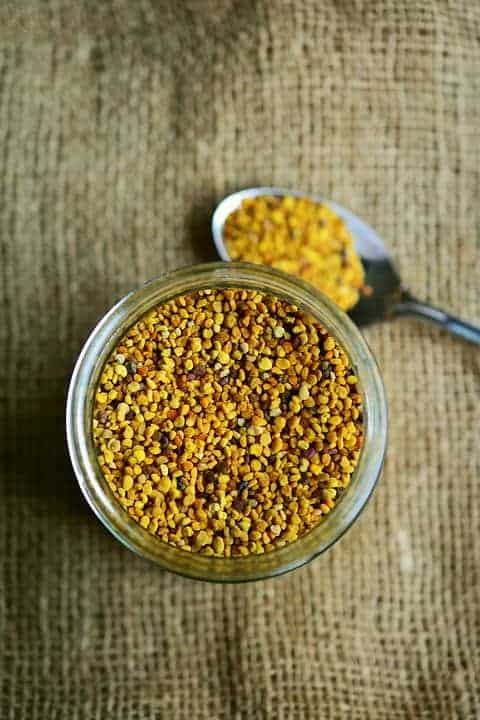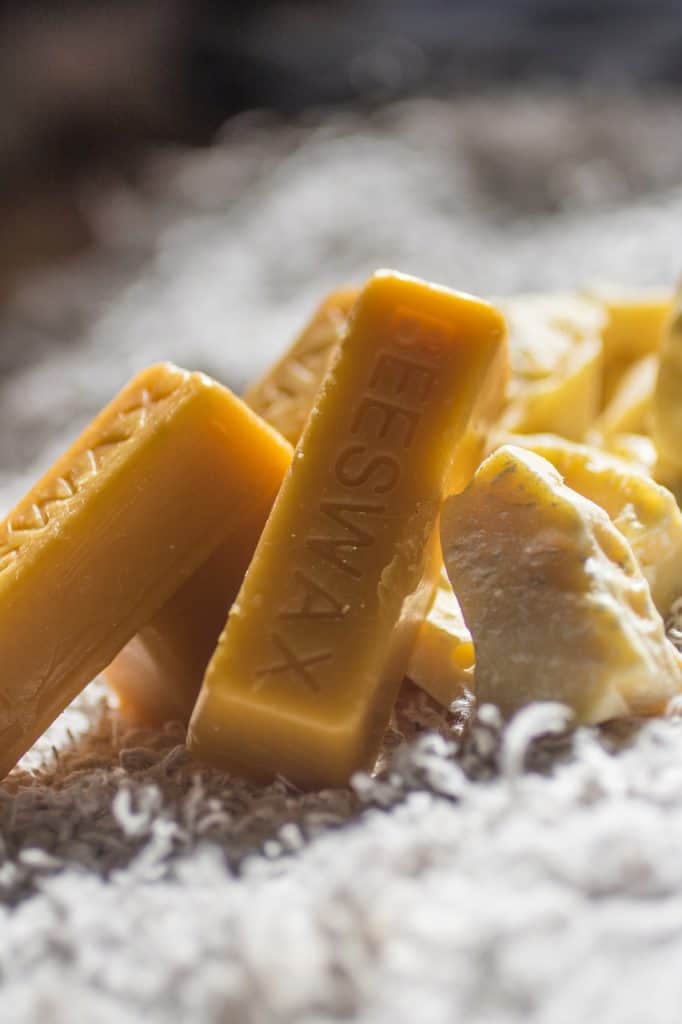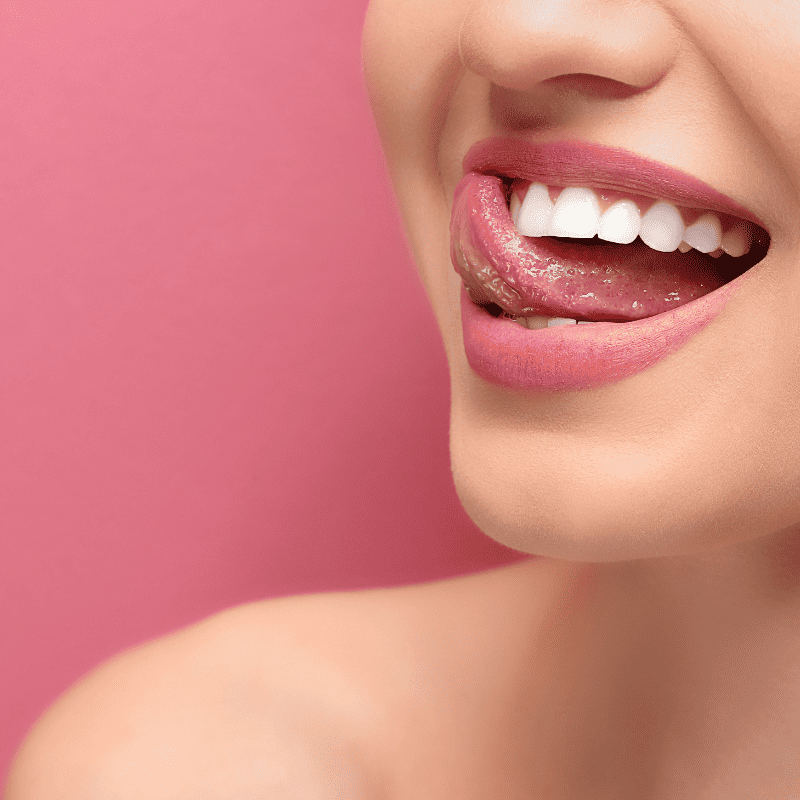While there is hardly a consensus among lip balms customers on the best lip balm, this simple beauty product remains adored and used by everyone, men and women.
You can find various options for lip balms, flavored, unflavored, tinted, with and without sunscreen, and natural and artificial ingredients; the possibilities for a fancy lip balm are endless.
So, which is the best lip balm for you? Here, we explain what to look for in a perfect lip balm that suits your needs.
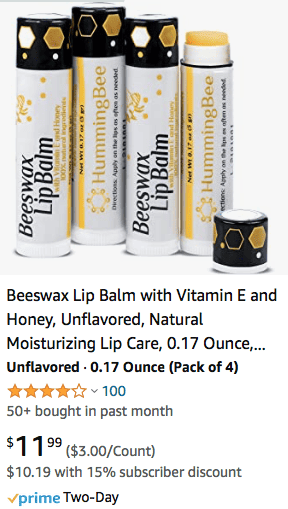
What makes a lip balm hydrating?
While one of the most important factors to keep radiant and healthy skin is to stay properly hydrated and avoid excessive sun exposure, the use of a skin barrier that provides insulation from environmental factors and, at the same time, nourishes your skin is essential for healthy skin.
Lip skin is much thinner than skin from other parts of the body. So, to avoid chapped lips, a hydrating lip balm with good natural ingredients is essential.
Lip balms may contain many moisturizing substances, from shea butter and squalane to hyaluronic acid. However, the best lip balms combine ingredients you like, work the best for you, and have a texture that fits your needs.
So, which ingredients make a good lip balm for cracked lips? Let’s look into that next.
What are some hero ingredients to look out for in the best lip balms?
We recommend natural lip balms with only natural ingredients and not a product of petroleum or other synthetic sources.
Here is a list of ingredients for sensitive or dry skin and dry lips: beeswax, honey, shea butter, hyaluronic acid, cocoa butter, jojoba oil, vitamin E, castor seed oil, avocado oil, coconut oil, marigold oil, and Aloe vera.
Now, it is possible that even with natural ingredients, you may have an allergy to a specific compound, so always read the ingredients list to avoid lip balms that contain those you might be sensitive to.
Benefits of some natural ingredients when included in the best lip balms.
Beeswax (Excerpt from Original Article)
Beeswax is a naturally occurring product secreted from worker bees that has varied uses in the modern day.
In skin care in products like lip balms, its function ranges from its role as an occlusive, helping to create a semi-occlusive skin barrier that minimizes transepidermal water loss; as a humectant, locking in hydration; and as an emollient to soften and soothe the skin.
As a natural substance, its use has been shown to help alleviate symptoms associated with common cutaneous conditions like dermatitis, psoriasis, and overgrowth of normal skin flora.
Beeswax, whether crude or combined, has demonstrated benefits for skin protection.
Much of the scientific literature has shown that beeswax can be a more natural approach to helping maintain skin hydration, easing inflammatory symptoms associated with skin diseases like atopic dermatitis or contact irritant dermatitis, and alleviating side effects of burns.
Its effects on the microbiome have been shown to reduce the overgrowth of the skin’s natural microbes, preventing the development of various tinea-associated conditions.
Beyond its medicinal uses, beeswax remains a mainstay in cosmetics to help shape various products, add soothing properties, and enhance brilliance.
Reference: Nong, Y., Maloh, J., Natarelli, N., Gunt, H. B., Tristani, E., & Sivamani, R. K. A review of the use of beeswax in skin care. Journal of Cosmetic Dermatology.
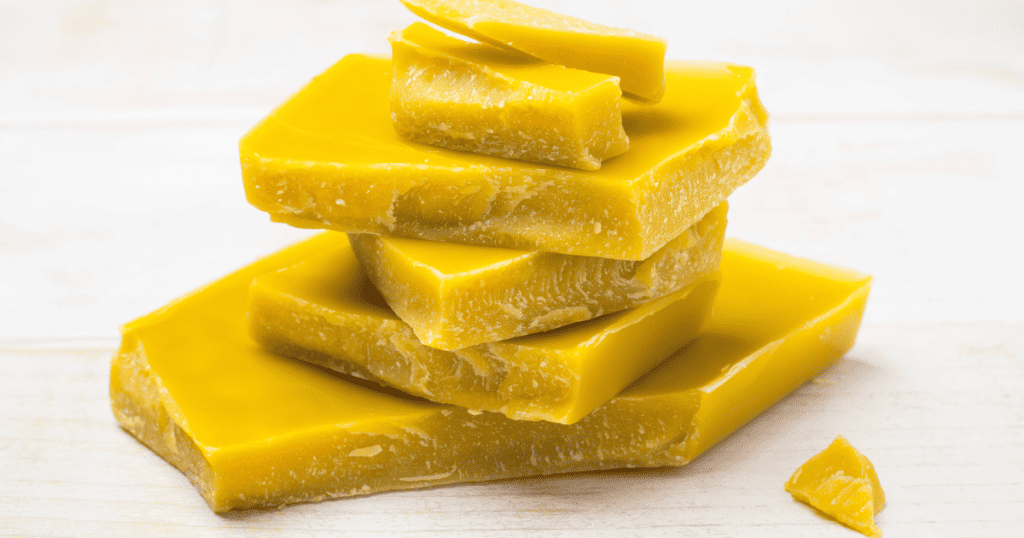
Honey (Excerpt from Original Article)
Honey is more than a simple food product but a valuable medical product with multiple mechanisms and beneficial virtues.
The varying antimicrobial, antioxidant, and anti-inflammatory properties of honey are responsible for the diverse and broad range of varieties of applications of honey being investigated as powerful topical treatments for healing and wound repair.
The phenolic compounds intrinsic to honey’s composition are recognized as significant contributors to its widely investigated antioxidant properties.
Reference: Angioi, R., Morrin, A., & White, B. (2021). The Rediscovery of Honey for Skin Repair: Recent Advances in Mechanisms for Honey-Mediated Wound Healing and Scaffolded Application Techniques. Applied Sciences, 11(11), 5192.
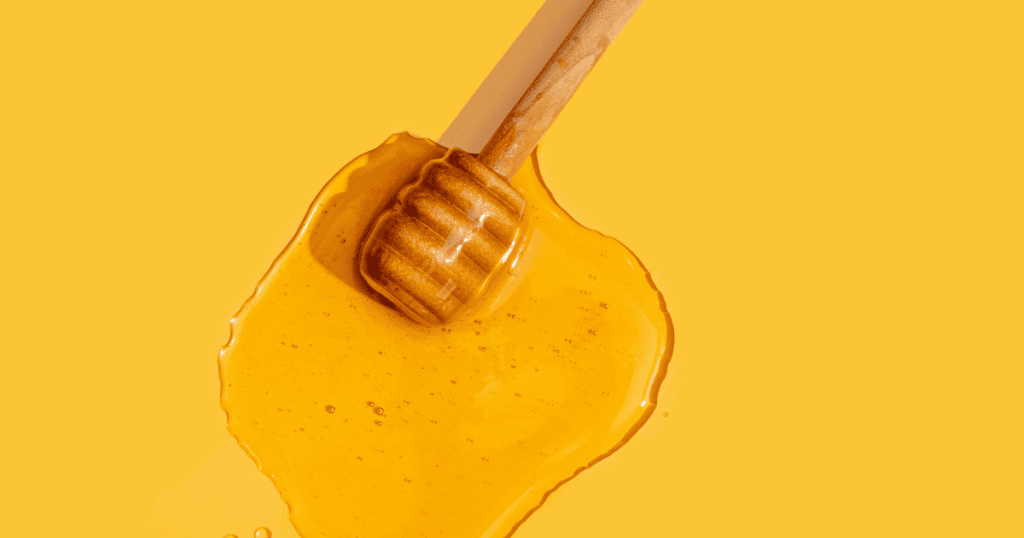
Cocoa butter (Excerpt from Original Article)
Cocoa finds its uses in several applications related to cosmeceuticals, owing to its antioxidant properties managed by its phytocompounds.
The essential constituent of cocoa extract includes theobromine (3,7-dihydro-3,7-dimethyl-1H-purine-2,6-dione), which belongs to the methylxanthine class of alkaloid molecules, along with caffeine and theophylline.
When included in lip balms, the polyphenols in cocoa effectively enhance skin health by their active free radical scavenging activities and protect the skin from premature aging.
The butter from cocoa seeds contains many essential fatty acids and phytosterols, which may restore the skin’s elasticity and treat infectious dermal disorders like dermatitis and eczema.
The cocoa butter in a lip balm also provides broad-spectrum protection from UV-A and UV-B radiation effects and endogenous photoprotection owing to its high antioxidant and anti-inflammatory properties.
Due to its soft and creamy consistency, cocoa butter is an excellent emulsifier stabilizer. Thus, it has many applications in moisturizing, soothing, regenerating, and anti-aging cosmetic products.
The polyphenols in Theobroma cacao have been further reported to prevent and inhibit the initiation and progression of dermal cancers. By modulating the levels of reactive oxygen species in the cells, it regulates the proliferation, survival, and apoptosis of cancer cells and retards their growth.
Reference: Singh, M., Agarwal, S., Agarwal, M., Rachana (2020). Benefits of Theobroma cacao and Its Phytocompounds as Cosmeceuticals. In: Swamy, M. (eds) Plant-derived Bioactives. Springer, Singapore.
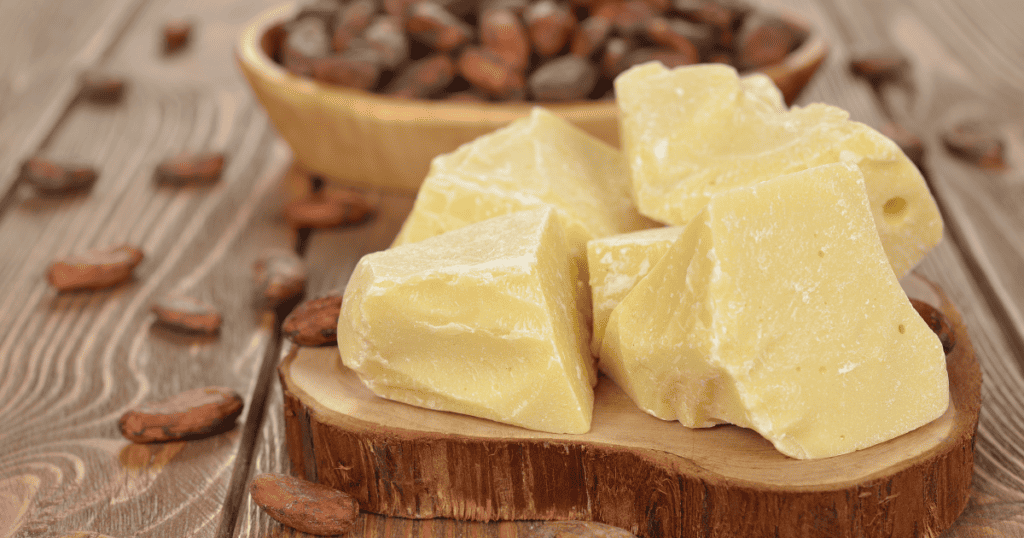
Calendula Officinalis Flower Oil (Excerpt from Original Article)
Calendula officinalis (Calendula), belonging to the family of Asteraceae, commonly known as English Marigold or Pot Marigold, is an aromatic herb that is used in Traditional systems of medicine for treating wounds, ulcers, herpes, scars, skin damage, frostbite, and blood purification.
It is mainly used because of its various biological activities to treat conditions as analgesic and anti-inflammatory when included in lip balm ingredients.
It is also used for gastrointestinal diseases, gynecological problems, eye diseases, skin injuries, and some cases of burns. Calendula oil is still medicinally used as a remedy for healing wounds.
In herbalism, Calendula in suspension or tincture is used topically for treating acne, reducing inflammation, controlling bleeding, and soothing irritated tissue.
This plant is rich in many pharmaceutical active ingredients like carotenoids, flavonoids, glycosides, steroids and sterols, quinines, volatile oil, and amino acids.
Reference: Ashwlayan, Vrish. (2018). Therapeutic Potential of Calendula officinalis.
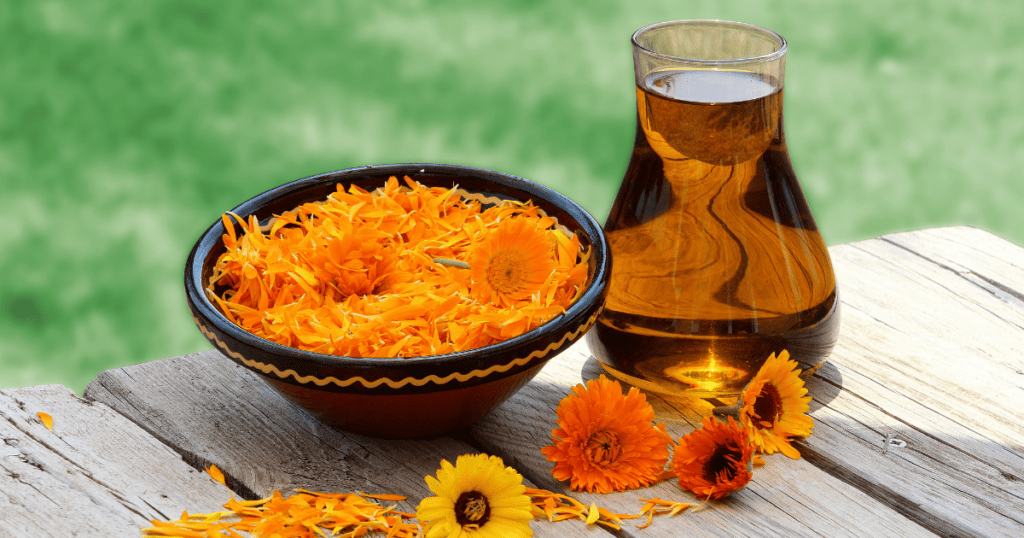
Aloe vera (Excerpt from Review Article)
The pharmacologically active ingredients of Aloe are concentrated in inner parenchymatous tissue, called aloe gel, and outer pericyclic tubules, called aloe sap or aloe juice.
The bioactive compounds from Aloe vera are very effective in various treatments, such as burns, allergic reactions, rheumatoid arthritis, rheumatic fever, acid indigestion, ulcers, diabetes, skin diseases, dysentery, diarrhea, piles, and inflammatory conditions of the digestive system.
Most of the health benefits associated with Aloe vera have been attributed to the polysaccharides in the leaf gel. Cosmetic products made from Aloe give the skin a healthy and supple look by reducing wrinkles, curing acne, rejuvenating, and giving it a youthful glow. In the pharmaceutical industry, it has been used to manufacture topical products such as ointments and gel preparations and to produce tablets and capsules.
Reference: Sharma, Priyanka & Kharkwal, Amit & London, Harsha Kharkwal & Abdin, M. & Varma, Ajit. (2014). A Review on Pharmacological Properties of Aloe vera. International Journal of Pharmaceutical Sciences Review and Research. 29. 31-37.
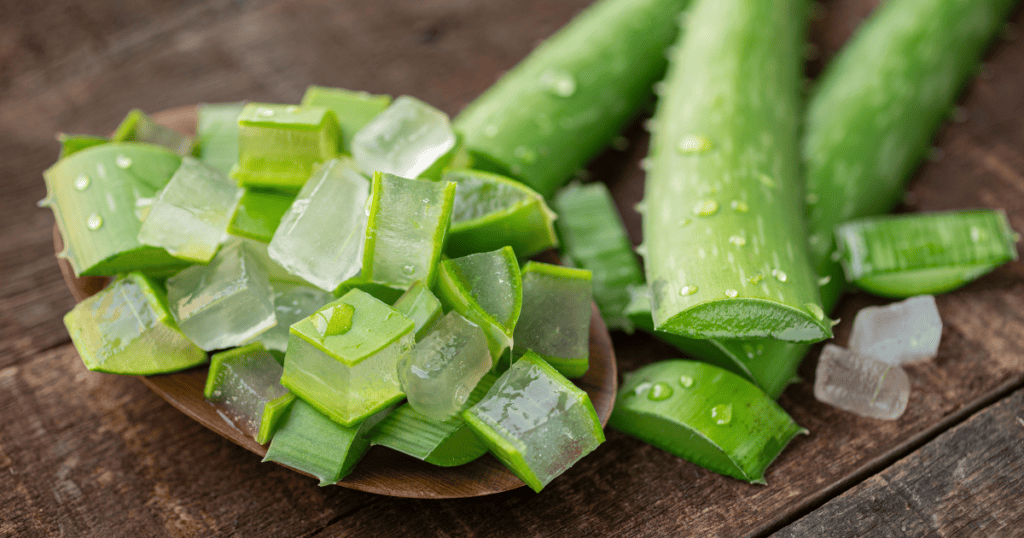
Vitamin E (Excerpt from Original Article)
Vitamin E is the most important fat-soluble antioxidant.
Due to its anti-inflammatory effects on the skin, it is contained in many cosmetic products. If topically applied, vitamin E deactivates unstable free radicals providing one of its electrons to the electron-deficient free radical, making it more stable.
As a result, it protects the skin from harmful effects due to its exposure to exogenous toxic agents such as pollutants, chemicals, and sun rays, preventing the propagation of free radicals.
Reference: Cassano, R. (2012). Vitamin E chemistry, biological activity, and benefits on the skin. In: Preedy, V.R. (eds) Handbook of diet, nutrition and the skin. Human Health Handbooks no. 1, vol 2. Wageningen Academic Publishers.
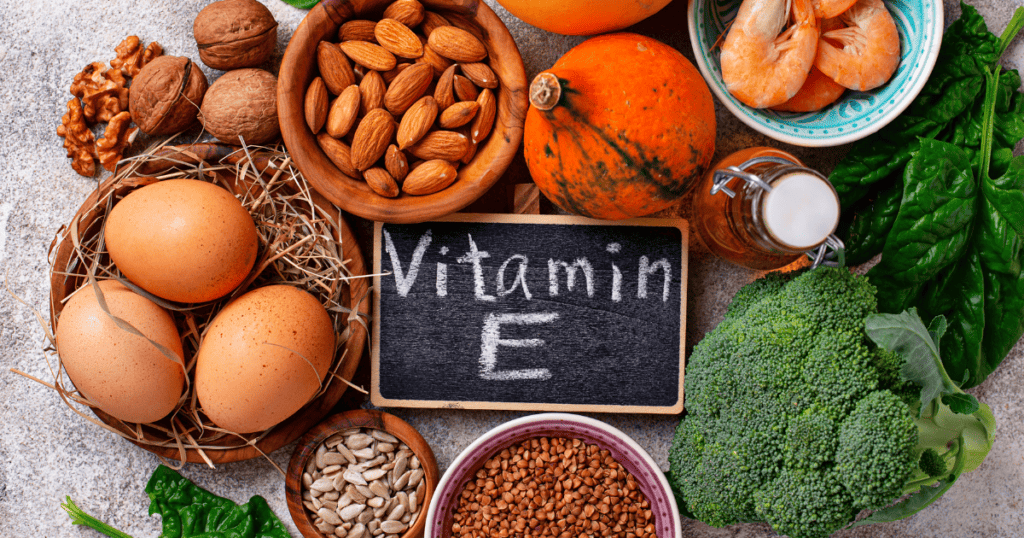
The best lip balms include shea butter?
Shea butter is an excellent ingredient for the best lip balms as its biochemical properties indicate antioxidant and anti-inflammatory properties.
So, a good lip balm should include shea butter to protect cracked lips.
What about peppermint oil?
Lip balms with this ingredient are common as peppermint or mint oil have a pleasant smell; however, it can worsen the symptoms when applied to irritated or dry lip skin.
Our HummingBee Beeswax Lip Balm uses vitamin E, honey, and marigold oil to help reduce pain and inflammation.
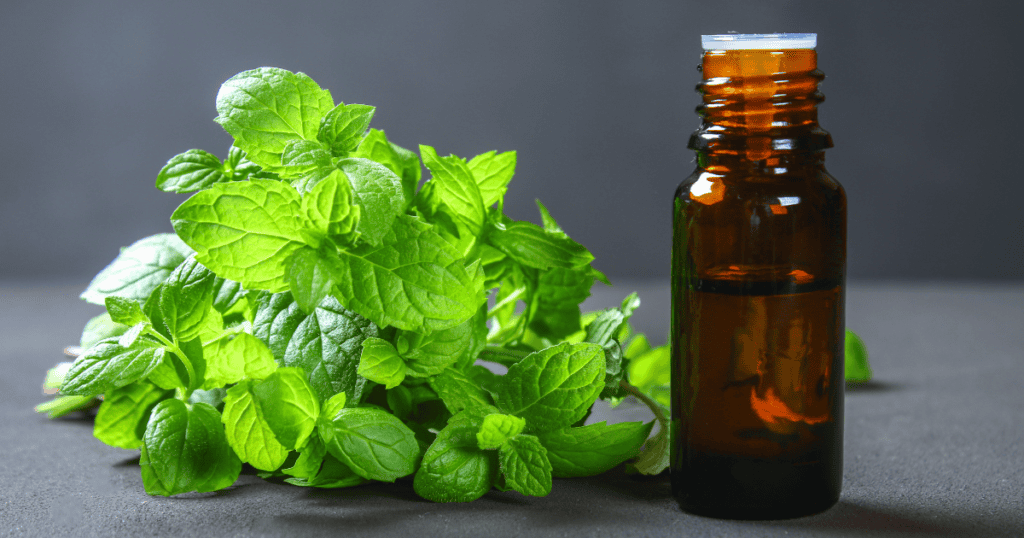
Ingredients to Avoid in Lip Balms.
Some ingredients may induce chapped lips, even in products that are supposed to moisturize and protect your skin.
Try to stay away from artificial ingredients or polyunsaturated oils that oxidize quickly.
Among these are petroleum-derived ingredients, mineral oil, and sunflower seed oils. These are not recommended overall, but on sensitive lips could be harmful.
Also, avoid fragrances, artificial flavors, tints, and aromas, included in your lip balm.
How long does lip balm last?
An excellent natural lip balm helps seal your chapped lips’ cracks and locks in moisture so they stay hydrated.
It should be applied throughout the day for the lips to stay moisturized. The lip balm layer gets rubbed off easily when you eat, drink, or talk. So it is better to apply it often. A good rule of thumb is to use it every two hours.
Also, using a natural lip balm during sleep helps keep lips hydrated so you wake up with soft, moisturized lips.
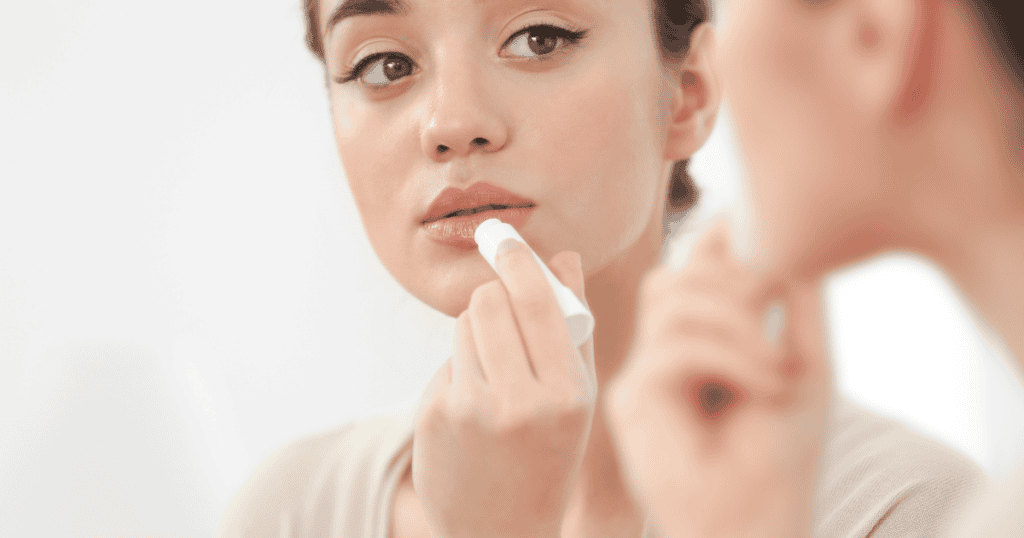
Is it for chapped lips only?
The best lip balm is not only the one that cures your chapped lips; you want to prevent cracked lips in the first place.
So, to always have smooth lips and prevent dryness, use natural lip products often and throughout the day, especially if you are constantly exposed to the sun and pollution.
Which lip balm is best?
We recommend our HummingBee Beeswax Lip Balm with Vitamin E and Honey; it is unflavored, unscented, and only contains natural ingredients.
While other lip balms smell and taste horrible and make your lips feel worse, ours has the natural and mild flavor of natural beeswax and honey. This means you will feel smooth and moisturized lips without worrying about dry, chapped lips.

What is the difference between lip balm and lip cream?
A lip balm is usually somewhat solid and comes in a tube. It is convenient to carry around as it is small and works like lipstick, so it is straightforward to apply.
In that form, you can choose from a tinted lip balm, vegan lip balm, traditional lip balm, sun protection lip balm, etc.
A lip cream is different from a lip balm in form and texture. As the name suggests, it has a creamy texture that usually requires you to use a finger to apply the cream to your lips.
Usually, it would be a night product to keep your lips moisturized through the night. Still, you can use a natural moisturizing lip balm at any time of day or night.
What is a vegan lip balm?
A vegan lip balm would only contain ingredients from non-animal sources.
So, ingredients like shea butter, coconut oil, aloe vera, calendula oil, castor seed oil, hemp seed, and other essential oils would be ok to include in a lip balm.
Even though natural ingredients such as beeswax and honey would not be considered vegan.
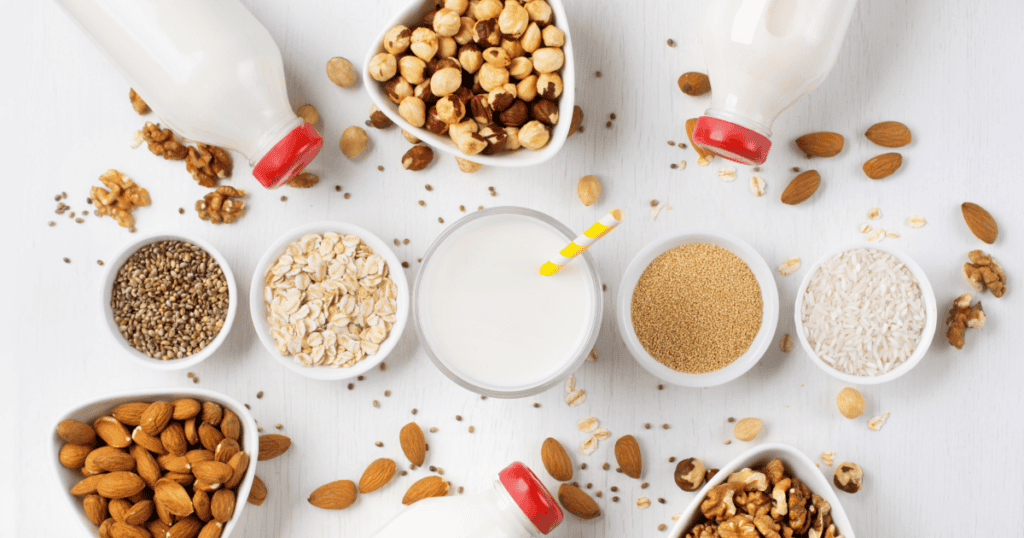
What vitamin deficiency causes dry lips?
All B vitamins and vitamins D and E are involved in maintaining skin cell integrity and helping repair damaged cells. However, vitamin B2 is essential for skin cells to prevent dry lips, flaky skin, and actinic cheilitis (a pre-cancerous condition).
So if you suffer from chronic dry lips, visit your board-certified dermatologist and get your vitamin B2 tested to find out if that might be causing your condition.
Can men use lip balms?
Absolutely. Men should also protect their sensitive skin with a natural lip balm to prevent dry lips.
The usual objection for men to use a lip balm is that they think it would look like a lip gloss.
That is why men must look for a lip balm that only contains natural ingredients such as shea butter, beeswax, and honey, is unscented and unflavored, and does not leave a glossy effect on the lips.
The best lip balm with those features is our HummingBee Lip Balm with Vitamin E and Honey; it is excellent for sensitive skin; yes, lip skin is sensitive in both men and women.

What about lip balm spf?
Lip balm spf could be vital if you have much sun exposure. Now, consider that traditional sun protection would require artificial ingredients.
Luckily there are natural ingredients such as calendula oil, beeswax, and cocoa butter that protect to an extent against harmful UV rays.
The trick with these natural lip balms is to apply them often and throughout the day to protect your lip’s sensitive skin.
Can Bee Pollen go bad? Learn this post next.
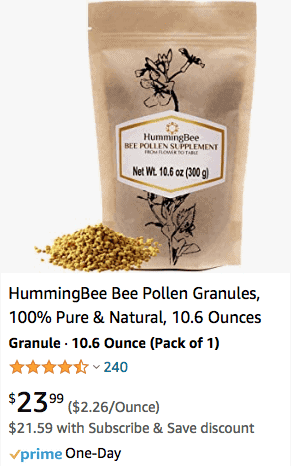
Honeycomb, Can you Eat It?
Yeah! Raw honeycomb can be eaten. This post covers everything about how the honeycomb is…
Can Honey Go Bad?
Like any food, raw honey can go bad. However, raw honey has some fascinating properties…
Bee Pollen Benefits
If you look around the internet, you’ll find a significant amount of information about bee…
What is beeswax
We continue with the series of articles about bee products from glandular secretions; last time,…
What are Bee Pollen Granules and how to consume it. Part 1.
If you look around the internet, you’ll find a significant amount of information about bee…
Chapped lips? Causes and treatments for dry, cracked lips.
What are sore chapped lips a symptom of? Severely chapped lips may have different causes….

